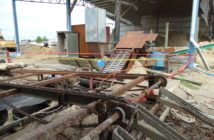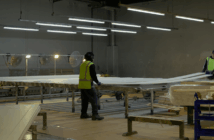Two fatalities, a serious injury and three high risk incidents in just over a month highlight the health and safety mistakes still being made in workplaces

Last month saw two worker deaths involving vehicles and two serious incidents involving dangerous gasses, while there was also a serious injury incident the previous month.
MinEx, the mining and quarrying sector’s health and safety council, says the incidents show the need for much more training on proper procedures and having detailed risk assessments done by competent people.
Joe Edwards, who is MinEx Chair, says his sector had to improve its training and procedures after the Pike River disaster.
“Two deaths, a serious injury and three high risk incidents in just over a month remind us of the risks that workers in many workplaces continue to face.
“We sincerely hope there will never be another Pike River but these recent incidents show the risks are still there for many workers.”
In late August a man died in an incident involving mobile plant at a Balclutha work site; the next day a person died at the scene after being hit by a vehicle in a logging yard in Palmerston North. Earlier in the month, two workers at a North Shore factory which handles solvents were overcome by fumes in a tank. Three firefighters came to their aid. All were taken to hospital and later discharged.
At the start of the month a worker at a West Coast demolition waste landfill was hospitalised in a critical condition after becoming overcome by fumes at the bottom of an excavation at the fill site. In July, an Auckland construction site worker was crushed and severely injured by a reversing crane.
Joe Edwards is also Chair of New Zealand Mines Rescue Service. It’s one of the organisations that provides risk assessments, development and training of safe procedures, emergency management and first response, including rescue in atmospheres where people can’t breathe. Mines Rescue provides these specialist services to a broad range of sectors including construction, dairying, tunnels, quarries and mines.
He says there is a likely common link in August/July’s incidents.
“Work is not being properly planned nor adequately risk-assessed to keep people safe and fully aware of hazards.
“Crushing by vehicles remains a key cause of worker death across a number of sectors. You need training on how to assess those risks and manage them.”
Edwards says risks multiply when workers are in enclosed spaces such as tanks and tunnels.
Mines Rescue has volunteer teams based at its headquarters near Greymouth as well as Auckland and Huntly. These and the underground mine rescue teams at OceanaGold’s operations at Macraes near Dunedin and at Waihi are the only organisations outside the Defence Force which train and equip teams to use specialist long-duration breathing apparatus.
Any incident in a tunnel or underground mine longer than 150m requires a First Response team on site and support from Mines Rescue and it is called in to other incidents such as Whakaari White Island after the 2019 eruption.
Mines Rescue also provides assistance in post event incident investigations and business recovery phases.
“Mines Rescue is only funded by levies on select mines and tunnels, but the service goes much wider,” says Joe Edwards.
Some sectors have seen the worth of the training and specialised skills that Mines Rescue can supply. KiwiRail has engaged Mines Rescue for training, specialised safety work and setting up its First Response capability.
“Assisting businesses with emergency preparedness and on-site First Response is an important service. You can’t always rely on the emergency services who are stretched thin or may be some distance away due to the remoteness of a site.’’
Edwards says the pressure on Fire and Emergency New Zealand (FENZ) and other emergency services as well as urban traffic delays increase the requirement for employers to ensure they have robust and tested emergency plans and first responders at work sites.
“All work sites need to have proper training and risk assessments so they understand what they might face, reduce those risks and be their own first responders if something does happen.”
He says FENZ, Police and Mines Rescue have strong working relationships and respect of the services each offer in an emergency.
“They recognise the calibre of Mines Rescue’s handful of dedicated staff and the skilled voluntary brigade members, generally drawn from the mining and tunnelling sectors and supported by their employers to attend training.”
Even more importantly, he says New Zealand workplaces need to lift their training and get better procedures and risk management in place, as mines and tunnels have and quarries are now required to do, since 29 men died at Pike River in 2010.
“We’ve got to have more focus on prevention of injuries and harm, at the top of the cliff rather than rescues at the bottom – and that was starkly and sadly illustrated in the last couple of months,” says Edwards.








